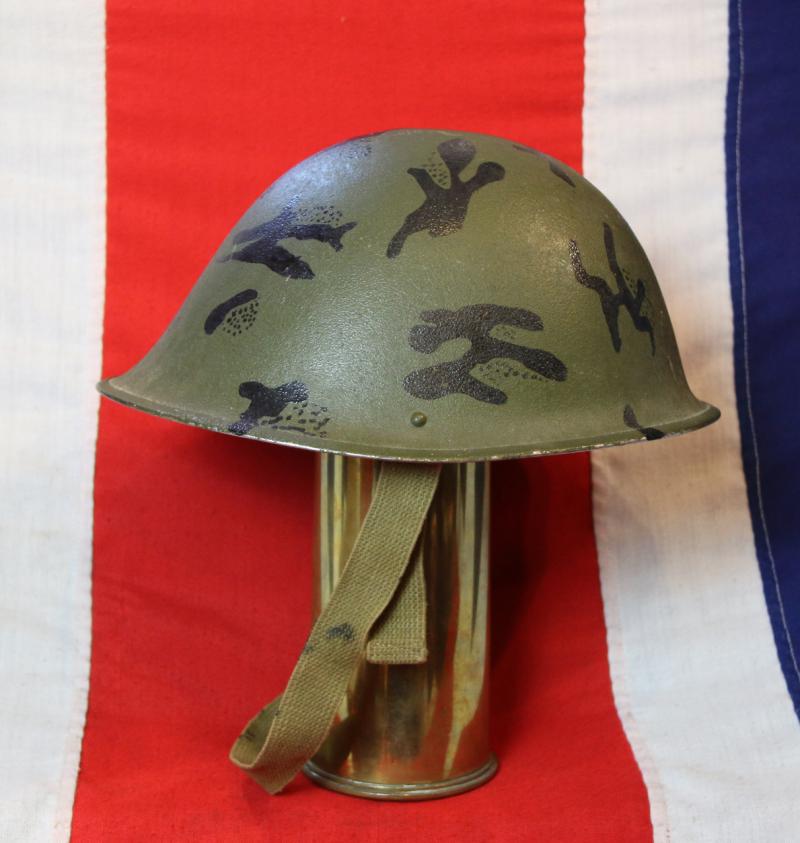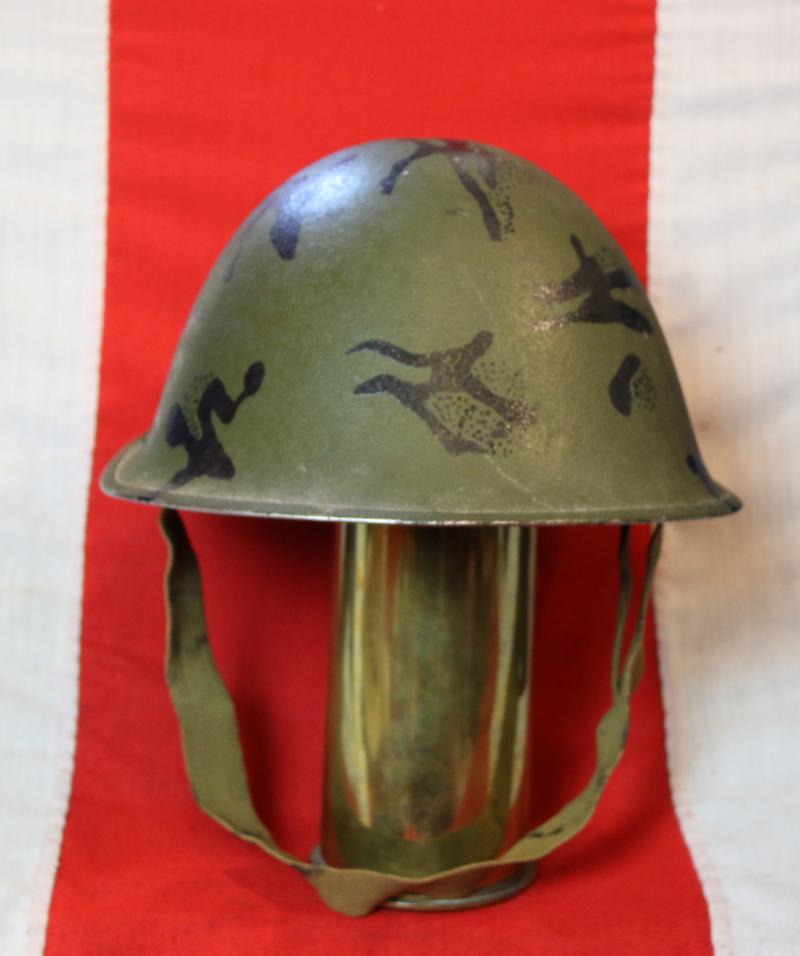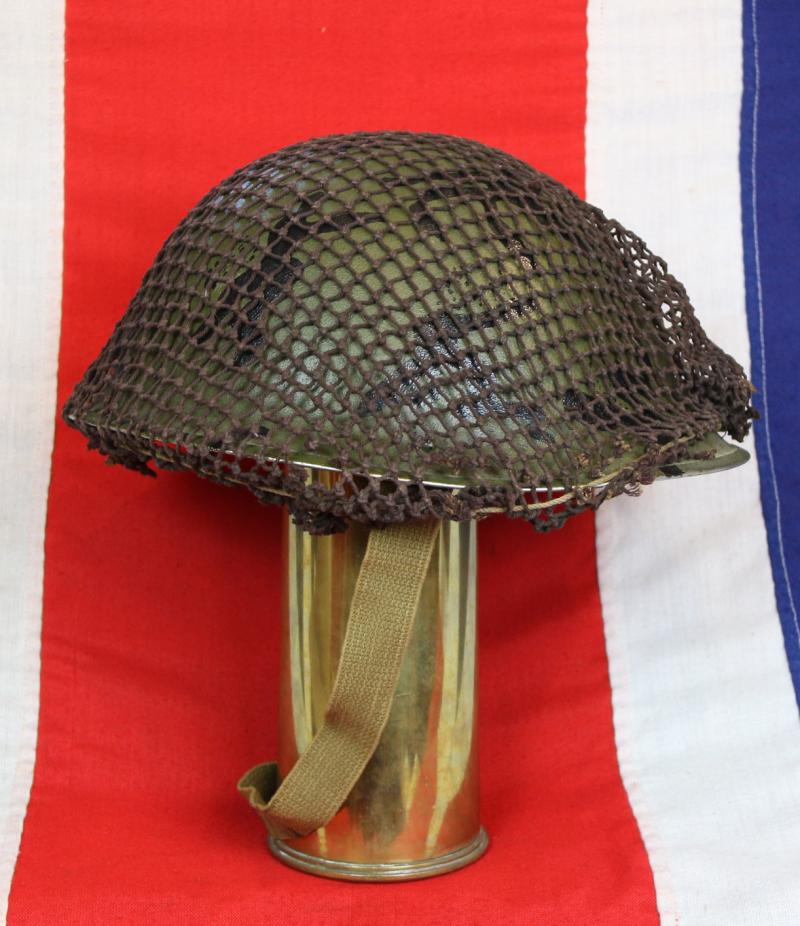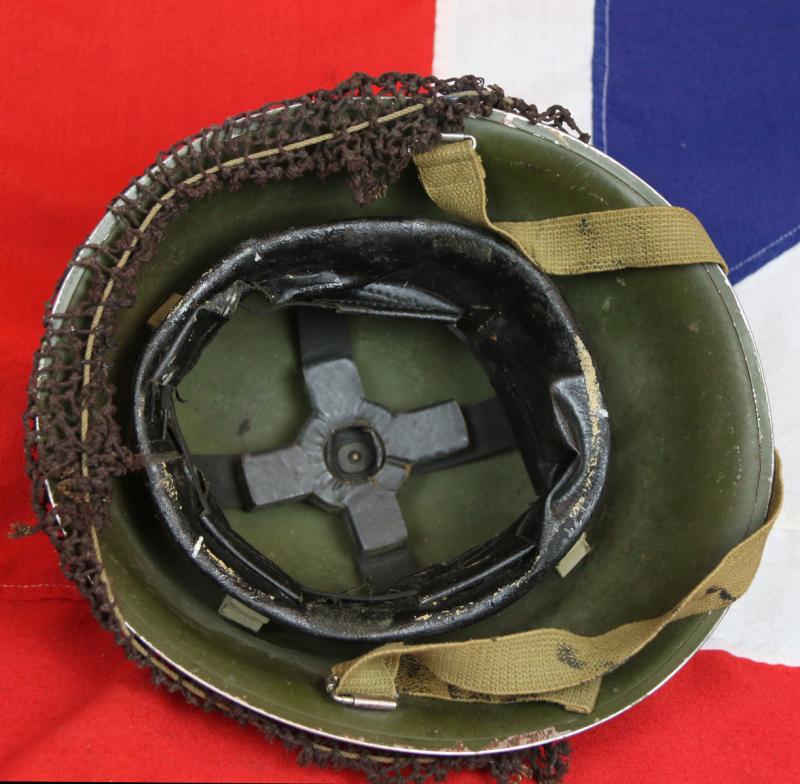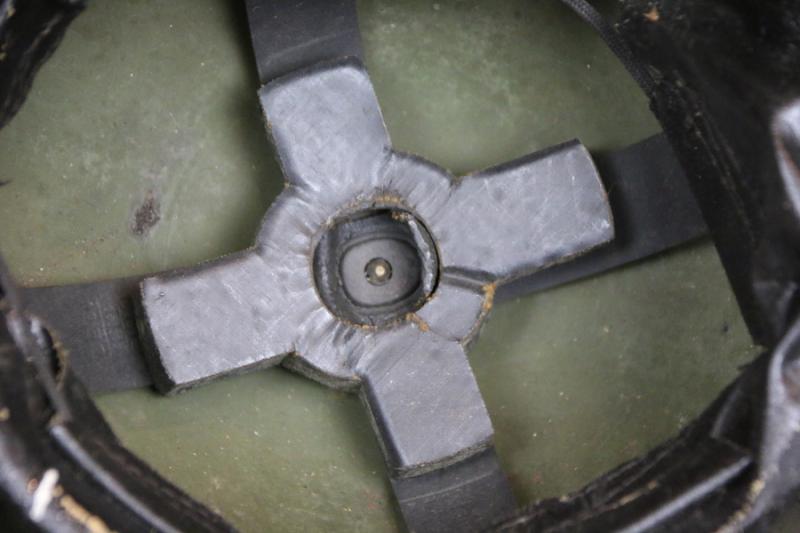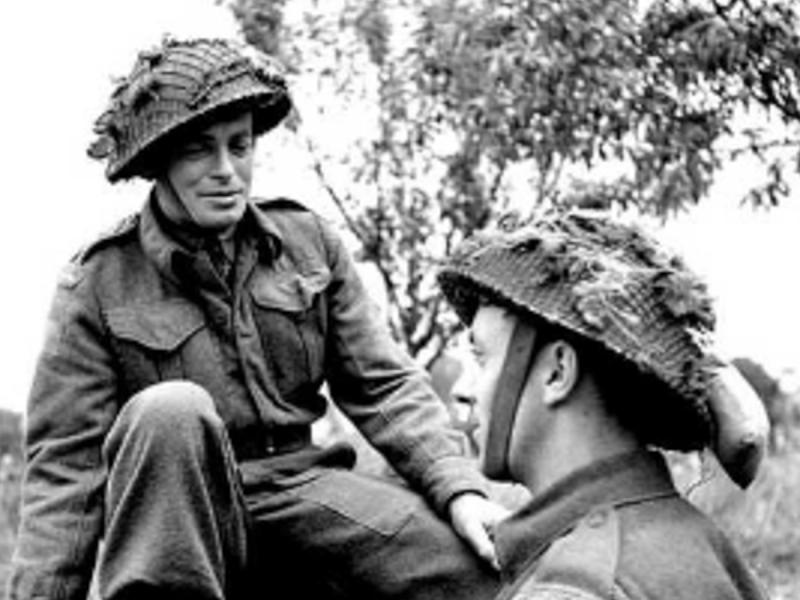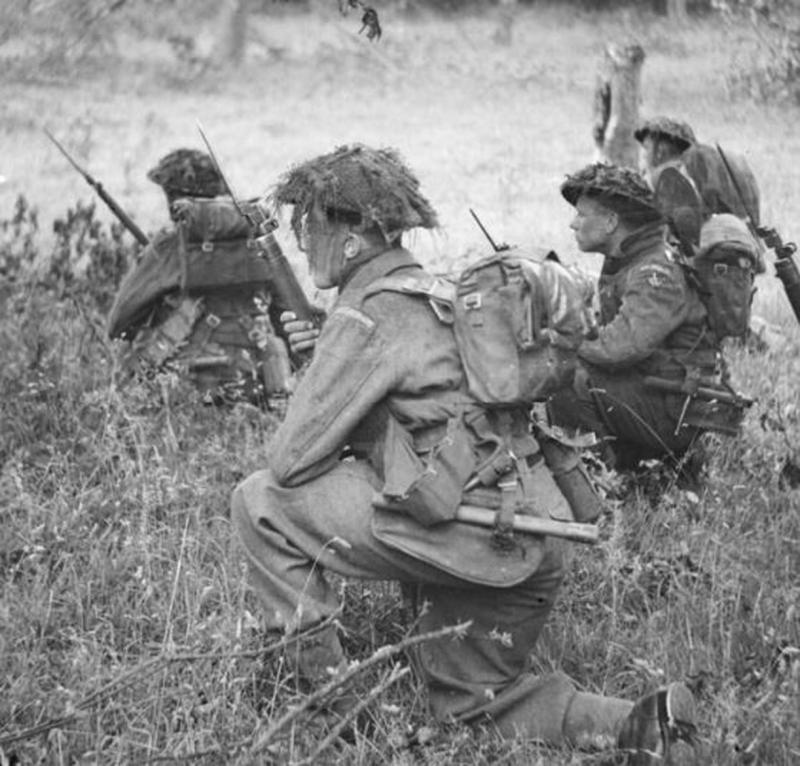A British 1944 Pattern 'D-Day' Combat Helmet. MKIII Designed in 1943. Complete With Hand Painted Camouflage and Camouflage Net.
The British Mark III was designed to address deficiencies of its predecessor, the Mark II, which was basically the same helmet used in the First World War. That helmet had been effective in preventing injuries in trench warfare conditions where shrapnel falling from above was the main hazard. From the earliest stages of the Second World War the British recognized the desirability of a new helmet that would be more appropriate for the combat conditions of the time. In particular, the helmet that replaced the MKII would need to offer better protection to the sides and back of the wearer’s head. One important design criterion was that the new helmet would should be identifiable as British and not be mistaken for those worn by Axis soldiers.1 Ultimately the Mark III helmet was approved for full production, which began in November of 1943. In February of 1944 issue of the MKIII helmet to Canadian soldiers began. The Canadian Third Division was given the new, improved model helmet because the British 21st Army Group, of which the Canadian Third Division was a part, assigned priority to units destined to land in the first wave in the D-Day invasion.2 For much of the general public, the first time they saw the new style helmet was in the photographic images of the Third Division landing on Juno Beach on June 6th 1944. For this reason, the MKIII will be forever associated with the Canadians during the Normandy campaign. Although the helmet was designed for British armed forces and was made in England, the MKIII has frequently been referred to as the “Canadian” helmet. In the eye of some, the shape of the MKIII suggests a turtle shell, hence the other frequently used name: “turtle” helmet.
Code: 25850
235.00 GBP

